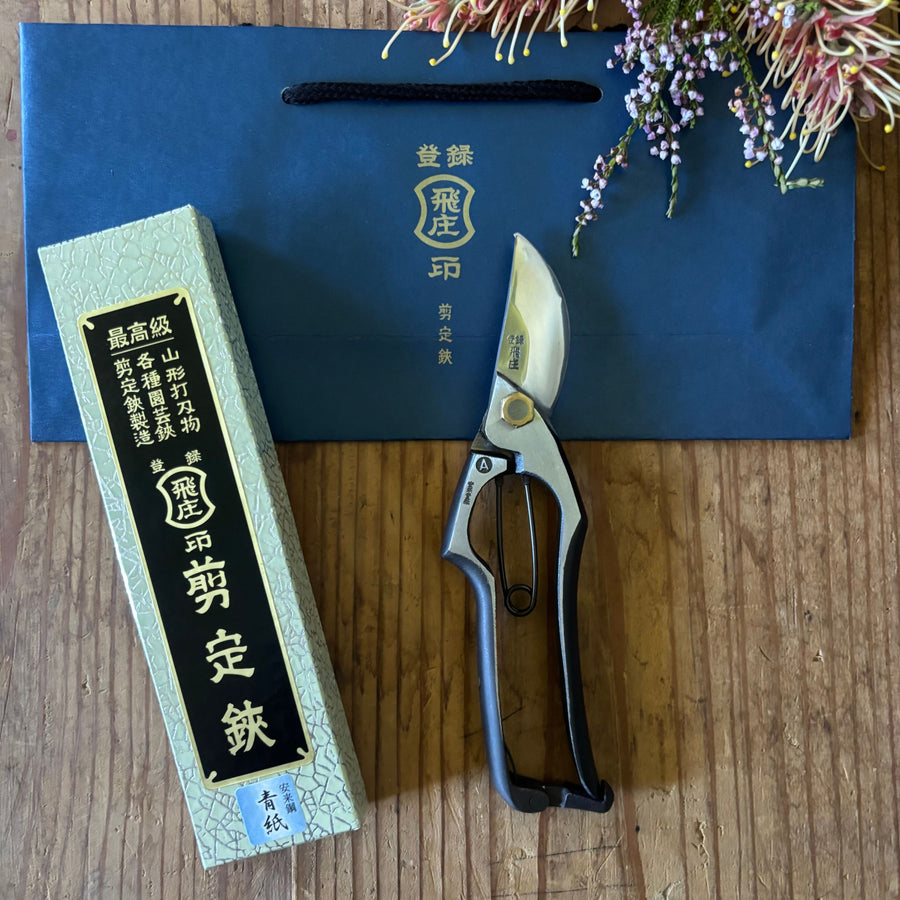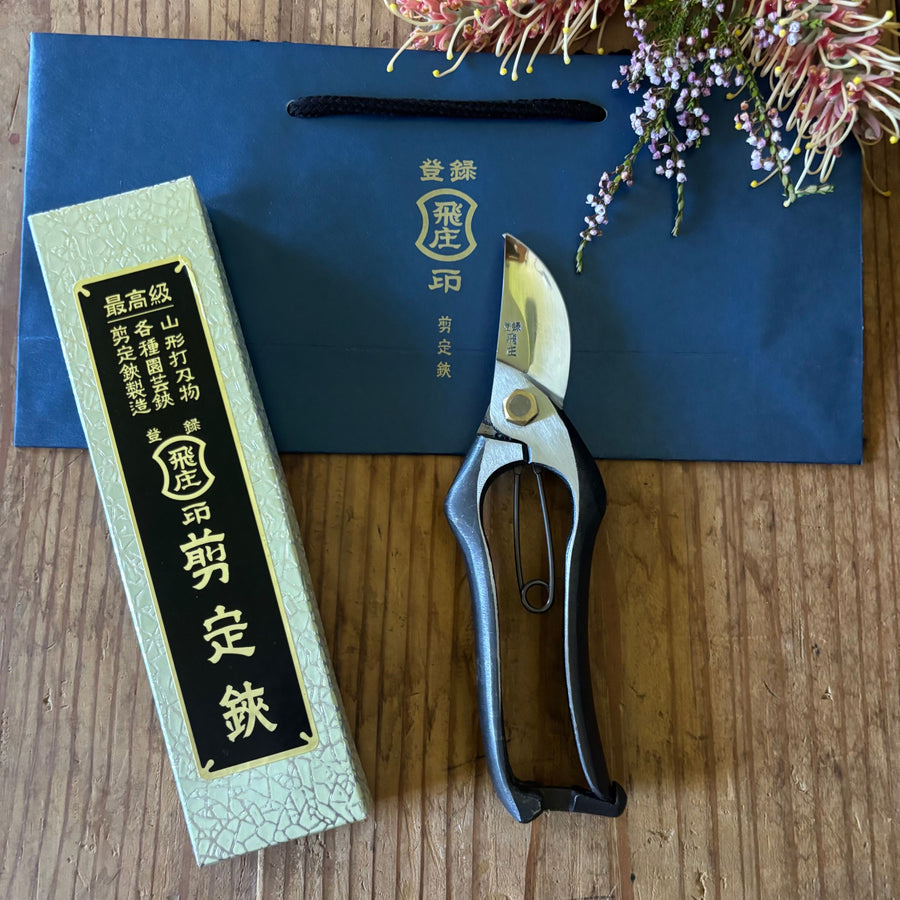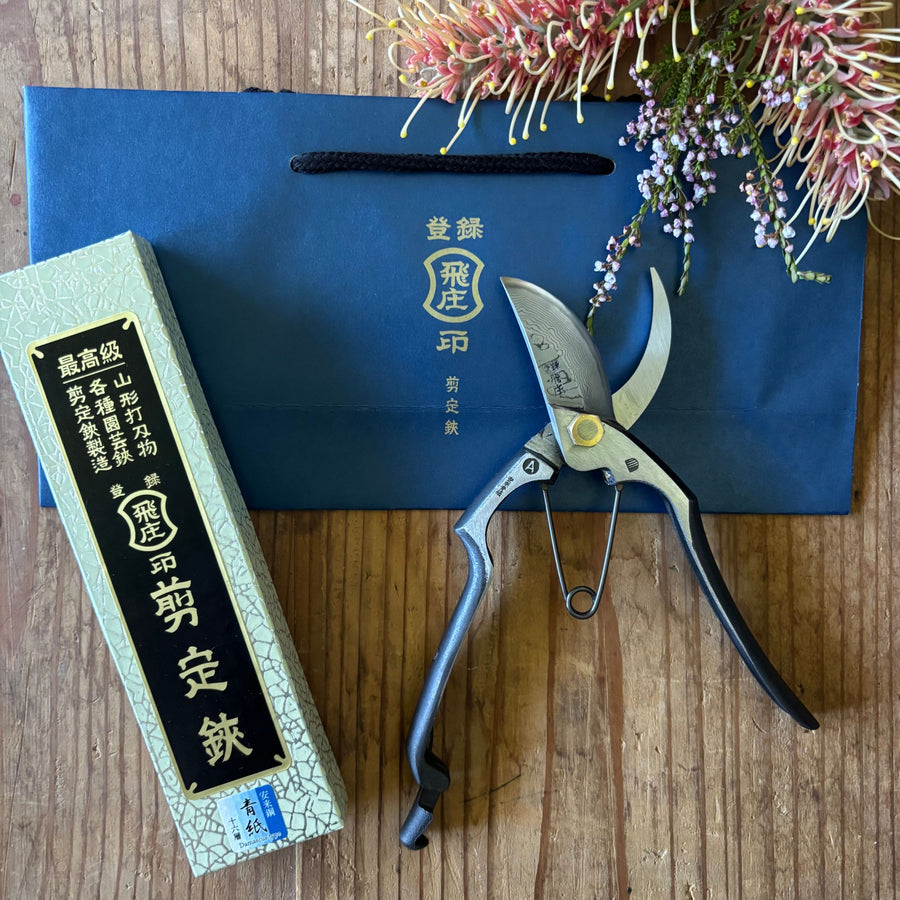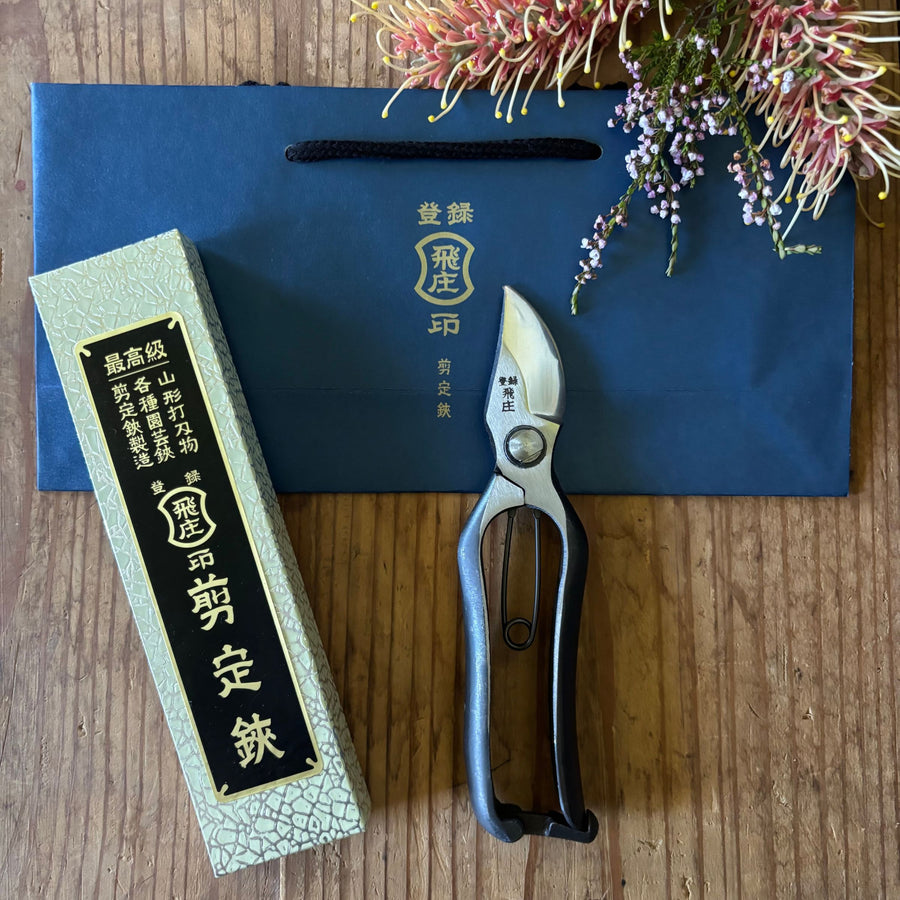Japanese secateurs: what sets them apart
Japanese secateurs are built for clean, plant safe cuts and long service life. Makers use high carbon steels and careful heat treatment so the edge bites cleanly and stays sharp. The result is less crush on live wood, smoother wound closure, and more reliable pruning in Australian gardens.
Steel and build
Most good Japanese secateurs are drop forged and hand finished. Precise grinding and a tight pivot keep the blades aligned under load. Convex cutting edges add strength at the tip while still feeling keen in the cut.
Fit, size, and patterns
Common sizes run from about 180 to 210 mm overall. Choose a handle that fills your palm without forcing your wrist. Smaller hands often prefer 180 to 190 mm for control, while 200 to 210 mm suits larger hands or tougher wood. You will find standard bypass bodies, roll handle ergonomics for long days, and large loop handles for gloved work.
Care to keep the edge
High carbon edges reward simple care. Wipe sap, dry after use, and oil the pivot and blades lightly. Touch up with a fine stone that follows the factory bevel, and avoid twisting through cuts. For background on why carbon steel takes such a keen edge, read our article on why forged carbon steel matters.
Maker spotlight: Tobisho
Tobisho is a Yamagata forge known among orchardists and arborists for rigid, precise tools that hold alignment. The A Type pattern is made for repeatable cuts in hardwoods. East West Tools imports Tobisho secateurs into Australia and ships them from Perth, so you can buy professional Japanese garden secateurs with local support.
Explore the full range here:Tobisho secateurs.
Quick picks
- Hard, keen edge for clean pruning and less crush.
- Forged bodies for strength and long term alignment.
- Ergonomic options in sizes and handle shapes to reduce hand strain.












